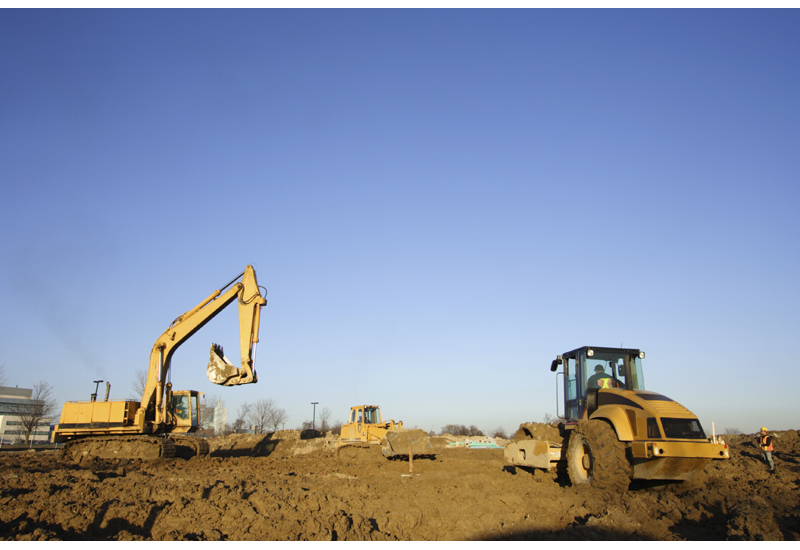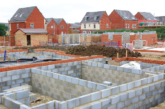
With brownfield sites a prime target for new homes Jeff Wilton, Managing Director CET Infrastructure, examines how a phased approach to meeting site conditions can help ensure a development takes place.
In the UK a brownfield site is defined as ‘previously developed land’ that has the potential for being redeveloped. It is often, but not always, land that has been used for industrial and commercial purposes and is now derelict and possibly contaminated.
The lack of available green spaces for development purposes has meant that brownfield sites have become increasingly popular in recent years, especially in places where demand for residential and commercial property is high. It is estimated that there are over 66,000 hectares of brownfield sites in England, and around a third of these are in the high-growth areas of Greater London and the South East. The government has committed to developing brownfield sites as a priority and has already exceeded its 2008 target of building over 60% of new houses on brownfield sites.
The most common driver behind a contaminated land investigation is the planning conditions imposed on a development by a Local Authority. Such conditions are often associated with a change to a more sensitive end use, from commercial, industrial or agricultural to residential. Alternatively, planning conditions can be stipulated if a Local Authority is aware of a significant source of ground contamination, such as a landfill site or historical pollution incident, in the general vicinity of a study site.
‘Onerous’ conditions
To the untrained eye these planning conditions can seem over complicated and onerous. However, in essence the assessment of the risks associated with potentially contaminated land are undertaken by a phased or tiered approach, with each phase of works informing the next. This methodology references current UK policy and technical guidance provided by Contaminated Land Publication CLR11 Model Procedures for the Management of Land Contamination and British Standard BS10175 Investigation of Potentially Contaminated Sites – Code of Practice.
Phase one
The recognised first phase of any investigation is a desk study, otherwise known as a Phase I Preliminary Risk Assessment (PRA). The PRA uses site reconnaissance, historical map and environmental database information in order to identify potential on and off site sources of ground contamination that could pose a risk to human, environmental and built receptors.
To developers, the PRA sometimes feels like an unnecessary expense that hinders progress as it does not involve physically exposing any contamination present beneath the site. However, by carrying out a comprehensive and robust desk based assessment, compliance with current guidance can be ensured as well as providing the developer with advance warning of potentially significant ground risks that could adversely impact their cost and programme.
Phase two
Upon completion of the Phase I assessment, a site-specific Phase II intrusive investigation must be implemented to address the relationship between conceptual sources, pathways and receptors of contamination established by the PRA. This approach offers benefits to developers as it prevents the undertaking of unnecessary site works and laboratory testing.
Examples of how the findings of the PRA can be used to the benefit of developers are as follows:
- If a point source of contamination such as a fuel tank is identified, intrusive works and sample recovery can be specifically targeted, thus gaining the maximum amount of relevant information during a site visit;
- If the PRA does not identify a potential source of hazardous ground gases, such as landfill site or backfilled pit, it would not be necessary to form boreholes and install and periodically monitor standpipes;
- If the PRA does not establish a sensitive controlled water receptor, such as a potable groundwater abstraction or river/stream, it would not be necessary to recover water samples for chemical testing;
- If the PRA does not identify any current or historical sources of ground contamination either on or in the general vicinity of the study site, it is possible to dismiss the requirement for investigative works entirely.
As the above demonstrates, by adhering to the phased approach stipulated by guidance, CET can ensure regulatory compliance without carrying out superfluous field work at significant cost.
Remediation plan
Unfortunately, there are many projects where significant potential ground contamination is identified by the initial phases of risk assessment. This would trigger the requirement for remediation in order to ameliorate the risks posed to identified sensitive receptors. In such instances CET is able to appraise the various available options and formulate an appropriate Remediation Plan. This document would not only detail the nature of the remediation works to be undertake, but would also stipulate the methods of validation that would enable the successful completion of the works to be demonstrated to the regulatory authorities.
In our experience it is vital to liaise with the regulatory authorities during this process so that any comments or concerns they have can be addressed and incorporated into the Remediation Plan. This approach will ensure prompt discharge of the planning condition upon completion and issue of the final verification/closure report.
Developers should therefore not be fearful of considering residential redevelopment of potentially contaminated sites. Whilst this process may feel complicated, arduous and full of potential pitfalls, support from expert partners, such as CET, can simplify the procedure and contribute to a successful development.








